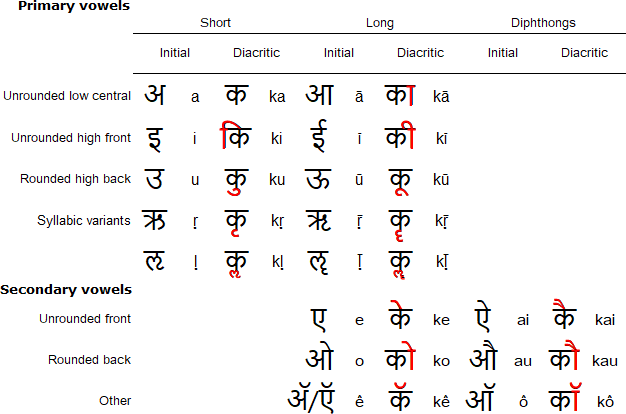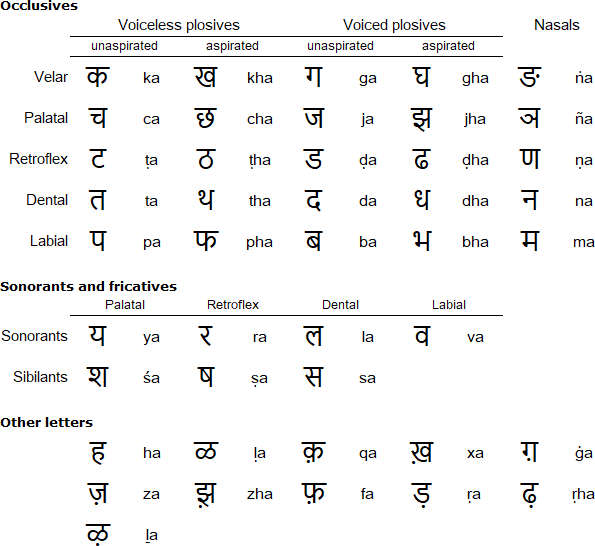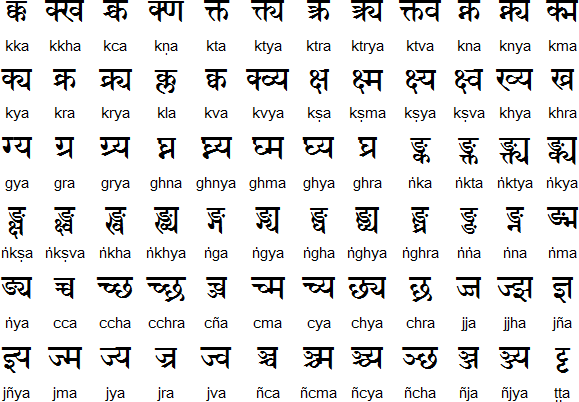Origin
The Nāgarī or Devanāgarī alphabet descended
from the Brahmi script sometime around the 11th
century AD. It was originally developed to write Sanskrit but was later
adapted to write many other languages.
The name Devanāgarī is made up of two Sanskrit words:
deva, which means god, brahman or celestial, and nāgarī,
which means city. The name is variously translated as “script of the city”,
“heavenly/sacred script of the city” or “[script of the] city of the Gods or
priests”. The origins and meaning of the name are uncertain.
Notable Features
- Type of writing system: alphasyllabary / abugida.
- Direction of writing: left to right in horizontal lines.
- Consonant letters carry an inherent vowel which can be altered or muted
by means of diacritics or matra. - Vowels can be written as independent letters, or by using a variety
of diacritical marks which are written above, below, before or after
the consonant they belong to. This feature is common to most of the
alphabets of South and South East Asia. - When consonants occur together in clusters, special conjunct letters are used.
- The order of the letters is based on articulatory phonetics.
Used to write:
Bhojpuri,
Hindi,
Konkani,
Maithili,
Marathi,
Mundari,
Nepali,
Pali,
Sanskrit,
Sindhi and many more.
Devanāgarī alphabet

Other symbols

Consonants

Variant letters
Some letters are two forms: the Classical, Northern or Kalikata (Calcutta) form is
used in the north of India; while the Modern, Southern or Mumbai (Bombay) form is used
in the south India and has become the standard form.

A selection of conjunct consonants
There are about a thousand conjunct consonants, most of which combine two or
three consonants. There are also some with four-consonant conjuncts
and at least one well-known conjunct with five consonants.

